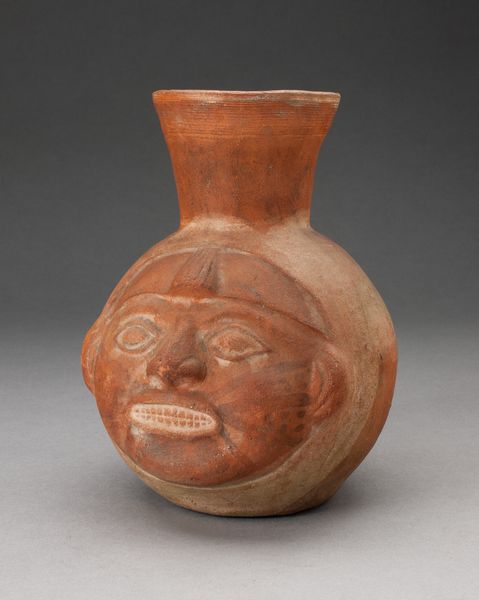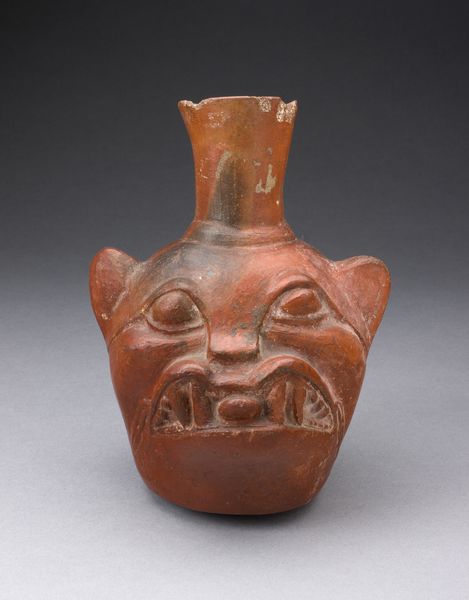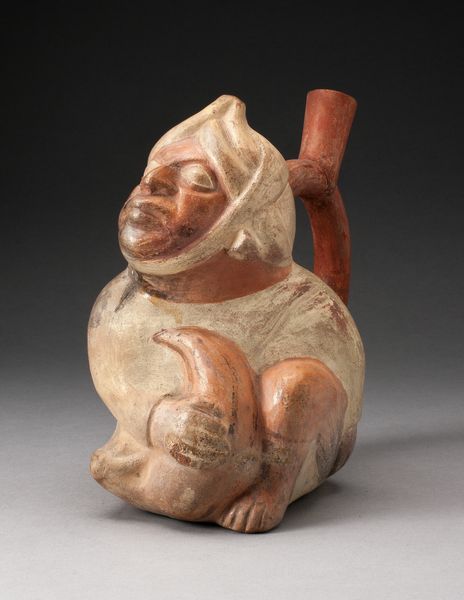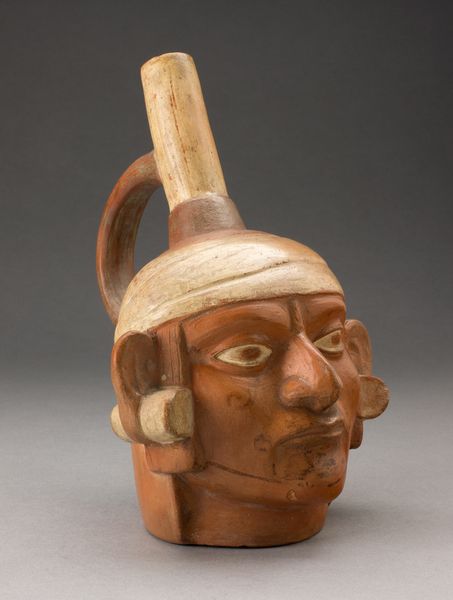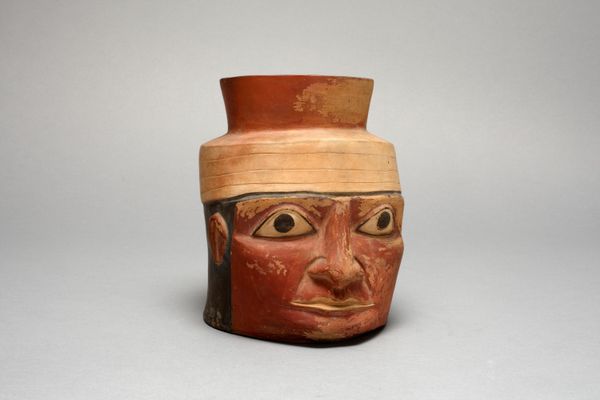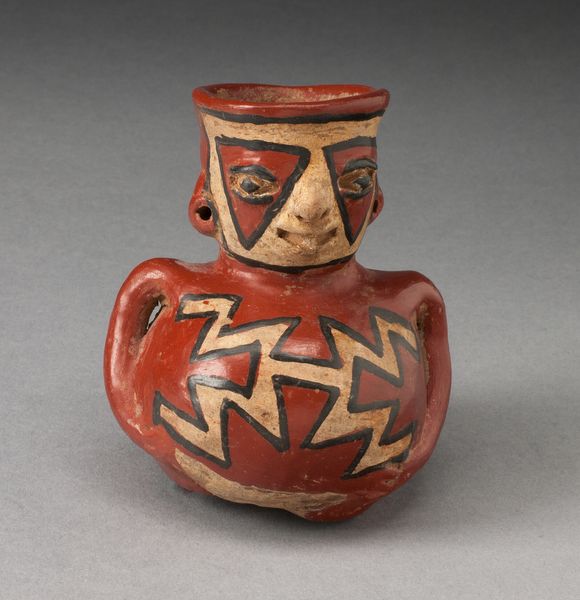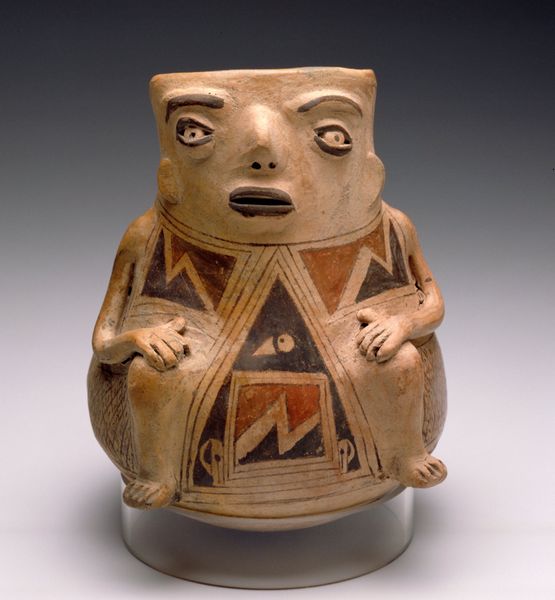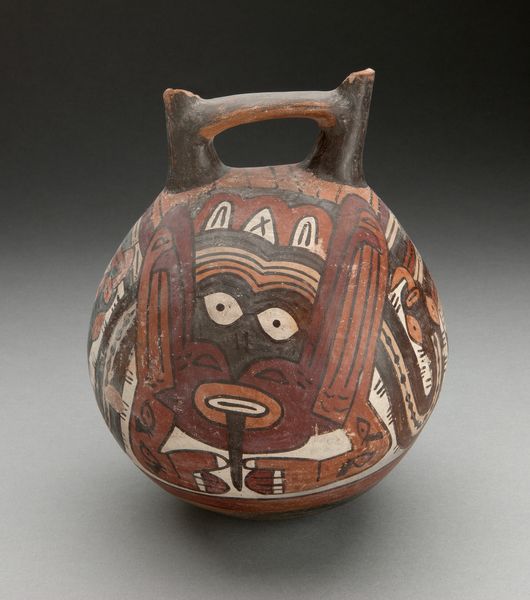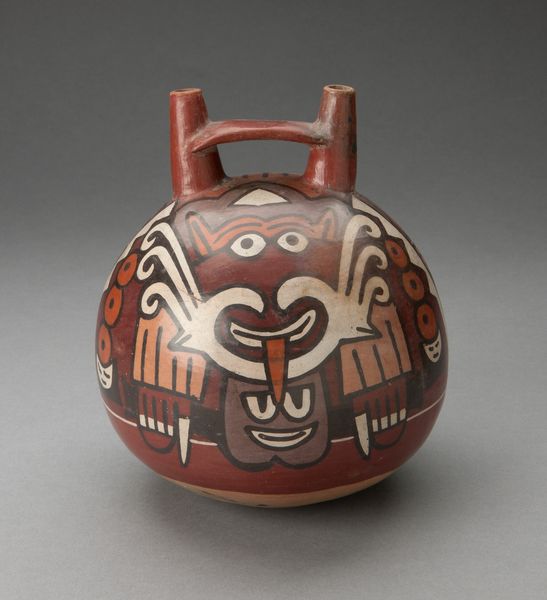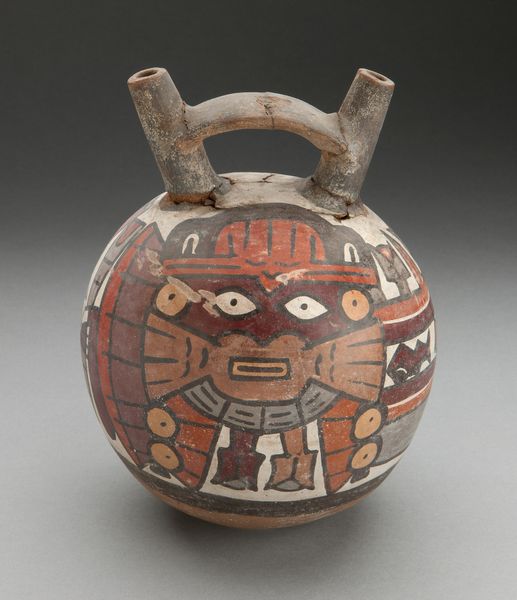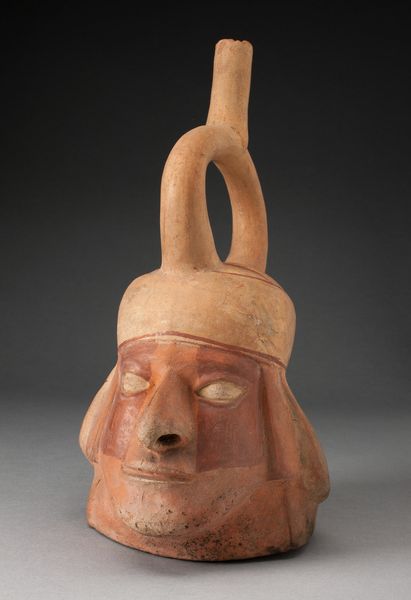
Portrait Vessel of a Figure with a Squared Headdress c. 100 - 500
0:00
0:00
ceramic, earthenware, terracotta
#
portrait
#
ceramic
#
figuration
#
earthenware
#
terracotta
#
indigenous-americas
Dimensions: H. 16.8 cm (6 5/8 in.)
Copyright: Public Domain
Curator: My first thought seeing this portrait vessel is just, wow, it's so expressive! The face is like a landscape of lived experience. Editor: Indeed! This piece, currently held here at the Art Institute of Chicago, comes to us from the Moche civilization of ancient Peru, dating roughly from 100 to 500 CE. It's identified as a "Portrait Vessel of a Figure with a Squared Headdress" and is made of earthenware. What's compelling here is that the Moche are long gone but this figure gazes back at us, millennia later. Curator: Exactly! There's this weightiness to it, literally because it’s earthenware but also emotionally. I keep thinking about all that’s happened since it was made, and this person's serene stillness remains. The square headdress…it’s kind of minimalist chic, don't you think? Editor: In Moche society, such a headdress, as well as the representation in the vessel, probably indicated status or a specific role. Portrait vessels weren’t simply decorative; many scholars think they might have been used in funerary rituals or as a way to keep the represented person present. It speaks to their worldview—maybe that even in death, the social fabric held significance. Curator: Oh, I like that idea, like keeping the conversation going across generations. It’s amazing the character they were able to give this…pot, really! Those slightly downturned lips hint at such thoughtfulness or maybe a touch of world-weariness. Editor: Consider, too, the significance of portraiture in challenging the dominance of Eurocentric art histories. To center Indigenous portraiture is to expand our definitions of artistic value, agency, and representation. Curator: That really shifts my perception. It isn't just a beautiful object but a powerful assertion of presence and memory. I almost feel I could pour water from this figure’s very being, participate in a sort of ritual of connection with this ancient world! Editor: Perhaps that's the vessel's magic then – its ability to dissolve temporal boundaries, prompting us to consider continuity, memory, and what remains. Curator: Beautifully said! It makes you ponder the narratives etched not just on its surface, but within us all. Editor: And hopefully, reflect on the social structures, that while ancient, hold resonances today in how we assign status and build monuments.
Comments
No comments
Be the first to comment and join the conversation on the ultimate creative platform.
